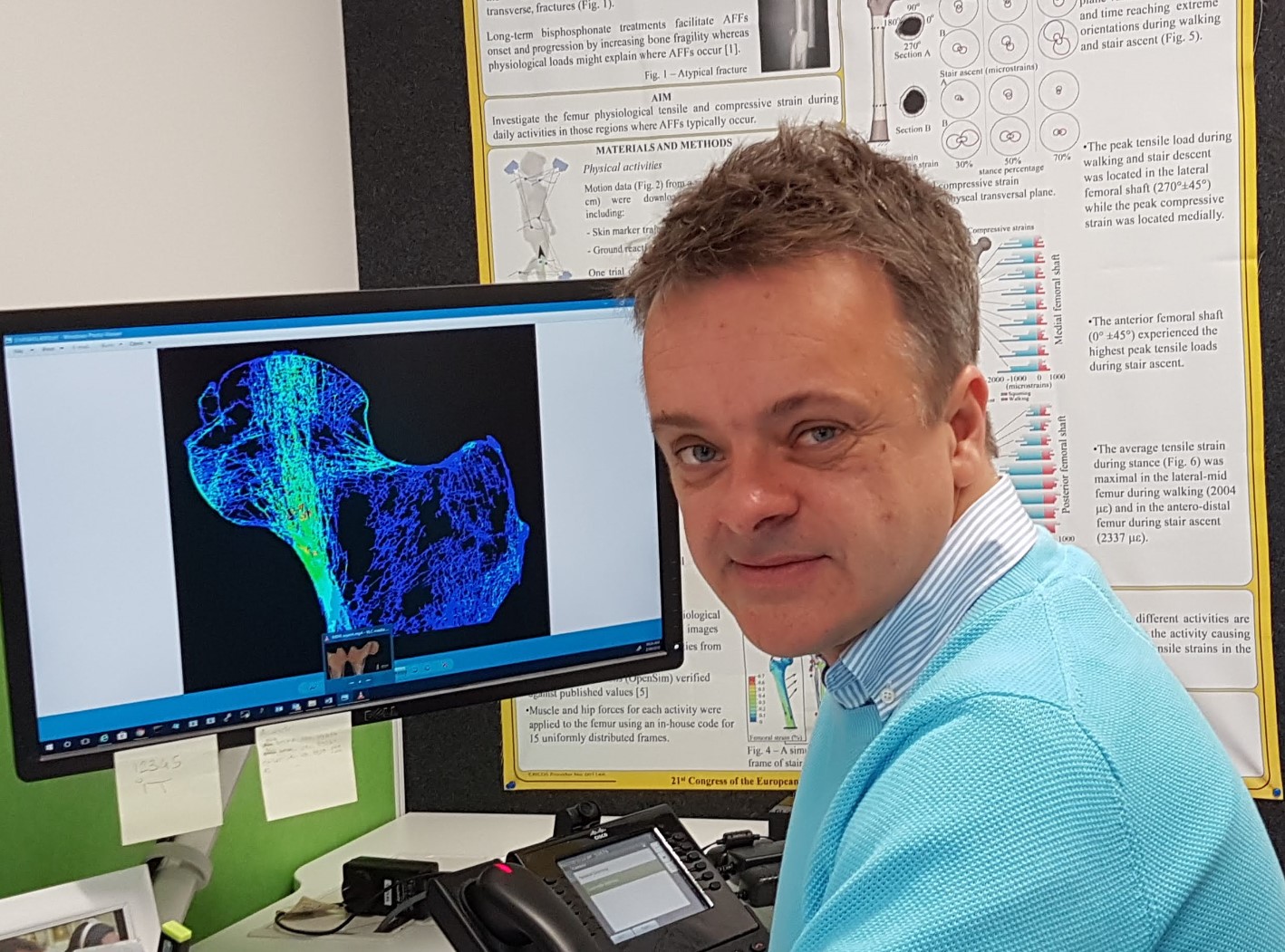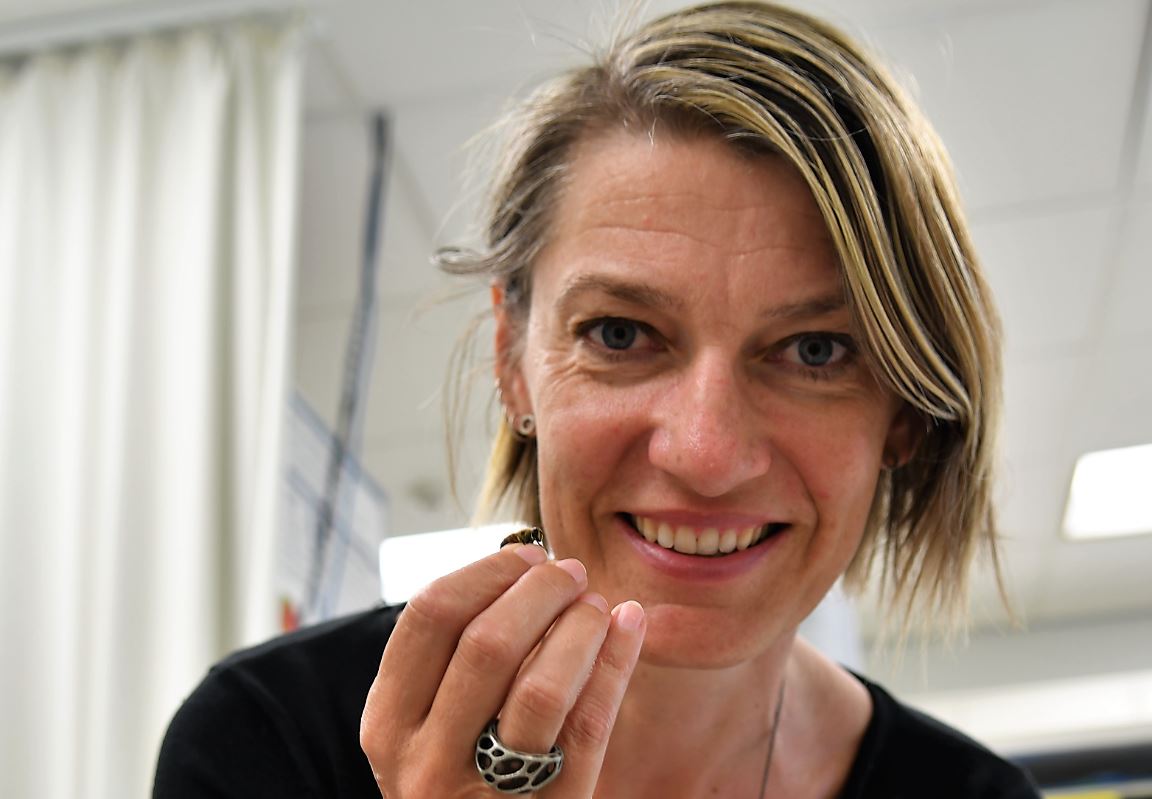
Two leading Flinders University researchers have been awarded key Australian Government fellowships.
Under the latest Australian Research Council (ARC) Future Fellowship round, senior Flinders researcher Associate Professor Karin Nordström will lead a $978,125 study to develop new techniques which identify the internal neurological sensors that determine how hoverflies visually perceive the world despite their obvious size limitations.
Flinders Lecturer in biomedical engineering Dr Saulo Martelli, from the College of Science and Engineering, was awarded a $726,125 grant to investigate the impact of regular physical activity on the bone strength of ageing Australians.
“Our research will analyse the effect of physical activity on bone strength and the way strength reduces over time when exposed to regular load bearing pressures like physical activity,” Dr Martelli says.
Dr Martelli says the results will improve the design of implant devices after bone injuries and also contribute to the engineering of biological tissue.
It will also provide a unique insight into the bone mechanics of ageing Australians for the first time.
“Hopefully we can find the missing piece of information required to begin intervention programs for problems we have with ageing, bone injuries and pathology in general,” he says.
With almost 5 million Australians aged over 50 suffering osteoporosis and the population ageing, effective prevention and treatment methods are becoming increasingly important.
“This is a process which will employ high resolution bone imaging devices unique to Flinders so can replicate the impact of regular physical activity.
“The core technology being used here has only been used in a few labs around the world and requires powerful super computers to translate the impact of activity on each tiny piece of the bone,” Dr Martelli says.
Hoverflies spend their short lives playing an important part in pollination, defending against threats and mating – but how do they identify moving targets with their small brains and poor optical ability?

This is just one of the questions which might soon be answered thanks to the ARC Future Fellowships, worth more than $1.7 million, handed down by the Australian Government to two leading Flinders University researchers today.
Associate Professor Nordström says the main aim of her research is to understand how insects have evolved to efficiently detect the distance of nearby moving objects amongst visual distractions and use this information for their own survival.
“It’s a sophisticated skill that hoverflies apparently do with ease. In particular, we will research how interaction between the neurons is directly linked to the behaviour of hoverflies pursuing targets,”
“The ability to identify and separate targets against a moving background plays a fundamental role for insects as they rely on these instinctive cues when pursuing prey, avoiding predators and interacting with each other, but we can use the knowledge for wider applications in modern technology.”
Associate Professor Nordström, from the College of Medicine and Public Health, says the information can be utilised to stop future cars from crashing by helping develop biomimetic algorithms which improve the performance of autonomous vehicles- to increase their safety on roads where conditions rapidly change.
“If we understand how insects with small brains and poor optics do things rapidly and more efficiently than us, we can utilise this information to build faster and better performing software in drones, driverless cars and buses,”
“We can envision this information being used to set a high alert which is similar to what we see in an active fly, improving a vehicles ability to detect nearby obstacles,” Associate Professor Nordström says.
Flinders University Deputy Vice-Chancellor (Research) Professor Robert Saint says the awarding of these ARC grants is further testament to the exciting high calibre research being carried out at Flinders.
“The funding awarded to Saulo Martelli, could lead to a new generation of bio-inspired high strength, light weight implants, such as replacement hip joints,” Professor Saint says.
“I’m especially pleased to see almost one million dollars awarded to Karin Nordström’s quest to understand the eye-brain function of insects.
“Studies of the brilliant visual processing systems of insects impact on technologies from robotic flight to artificial intelligence.”
Professor Saint says it’s enormously important that the ARC has recognised the value of funding research filled with possibilities, and not just research to solve known challenges.
“These latest grants reinforce our recent research grants successes, both in ARC and NHMRC, and are another important step towards realizing our strategic ambitions in research,” Professor Saint says.

